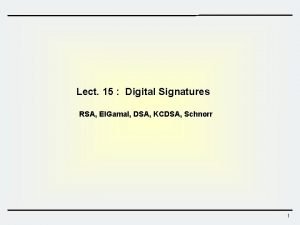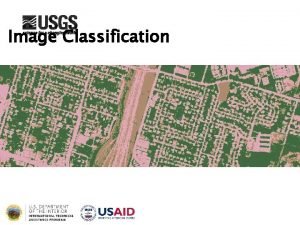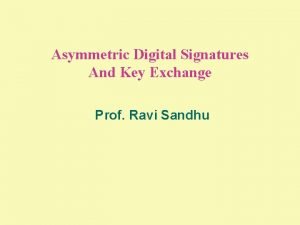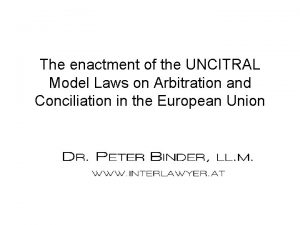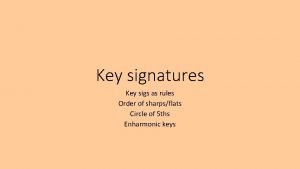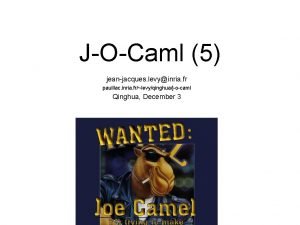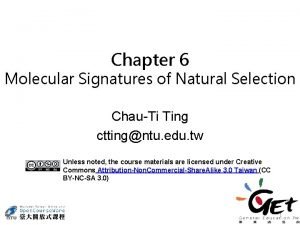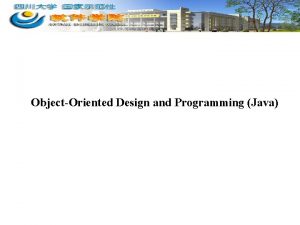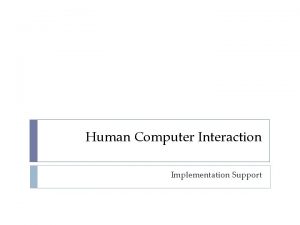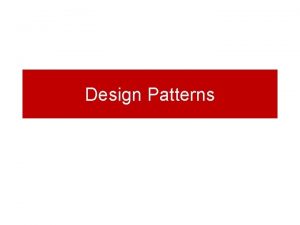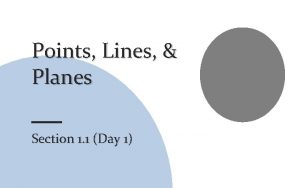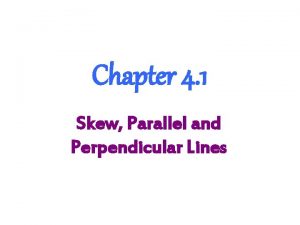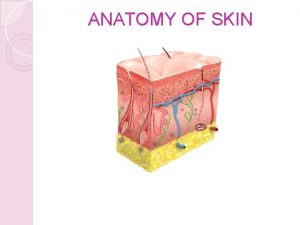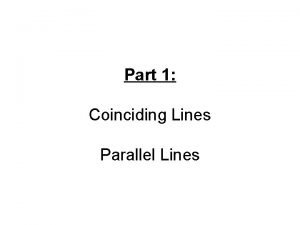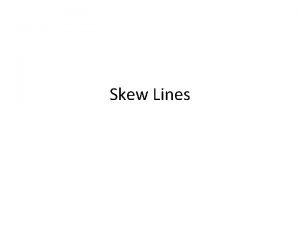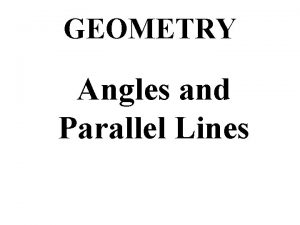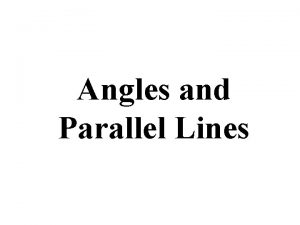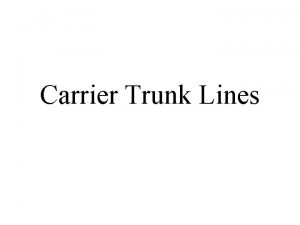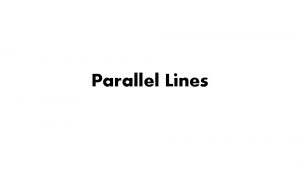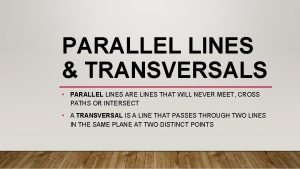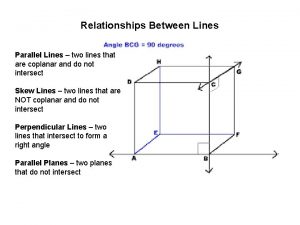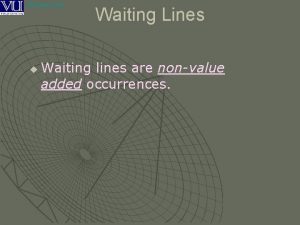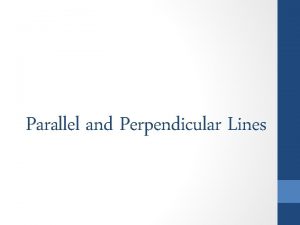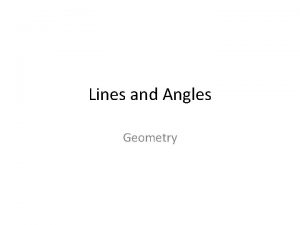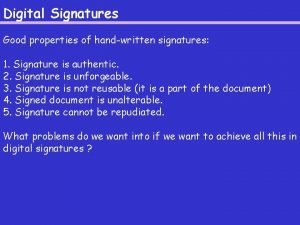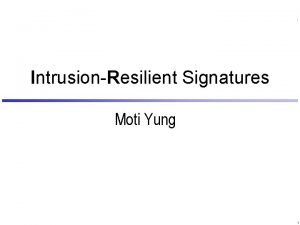Interface versus Implementation Interface First lines or signatures





















- Slides: 21

Interface versus Implementation • Interface: First lines or signatures and pre- and postcondition comments for public methods of a class. • Implementation: Private attributes and methods and C++ statements inside the bodies of all methods of a class.

UML Diagram for Pokemon - my. Name: string - my. Power: int + + + Pokemon() set. Name(string g): void set. Power(int p): void get. Name(): string get. Power(): int to. String(): string Class Name Data Methods (actions) - private + public

#pragma once #include <string> class Pokemon { private: string my. Name; float my. Power; public: Pokemon(void); ~Pokemon(void); void set. My. Power(float); void set. My. Name(string); float get. My. Power(void); string get. My. Name(void); string to. String(void); };

#include "Pokemon. h" Pokemon: : Pokemon(void) { my. Power = 0. 0; my. Name = "None"; } Pokemon: : ~Pokemon(void) { } void Pokemon: : set. My. Power(float p) { my. Power = p; } void Pokemon: : set. My. Name(string n) { my. Name = n} float Pokemon: : get. My. Power(void) { return my. Power; } string Pokemon: : get. My. Name(void) { return my. Name; }

Class Type Variables are References • This declaration gives you a variable that refers to a Pokemon object. Pokemon pokey; pokey is a variable that contains a reference to a Pokemon object. pokey. set. Name(“Pikachu”);

Creating a Pokemon Object • Create a new Pokemon object and assign the reference variable to link to it. Pokemon pokey; pokey my. Name: None my. Power: 0 • What do the following two statements do? pokey. set. Name(“Pikachu”); pokey. set. Power(150);

Input. Pokemon Method int main() { Pokemon pokey; input. Pokemon(pokey); return 0; } pokey my. Name: None my. Power: 0 void input. Pokmen(Pokemon &p) { p. set. Name(“Pikachu”); p. set. Power(150); }

p & pokey refer to same Pokemon int main() { Pokemon pokey; input. Pokemon(pokey); } my. Name: None pokey my. Power: 0 void input. Pokmen(Pokemon &p ) { p. set. Name(“Pikachu”); p. set. Power(150); }

Class Objects as Parameters • Pokemon is a class type variable. • input. Pokemon receives P, which is a reference to a Pokemon object. • When main calls input. Pokemon method with pokey that means p gets a link pointing (or a reference referring) to main’s pokey

Method Changes main’s pokey int main() { Pokemon pokey; input. Pokemon(pokey); cout << pokey. get. Power(); return 0; } pokey my. Name: Pikachu my. Power: 150 void input. Pokemen(Pokemon &p ) { p. set. Name(“Pikachu”); p. set. Power(150); }

Input of Pokemon Data int main() { string n int p Pokemon pokey; cout << (“Enter name: “); cin >> n cout <<(“Enter power: “); cin >> p pokey. set. Name(n); pokey. set. Power(p); return 0; } Can we avoid repeating the bold lines for every Pokemon? ;

Complete input. Pokemon // Pre-conditions: Receives a // reference or link to a Pokemon // object named P. // Post-conditions: Prompts user to // enter name & power. Sets name // and power of the given Pokemon. void input. Pokemon( Pokemon &p)

Input. Pokemon Method • • • #include "Pokemon. h" #include <iostream> using namespace std; • • void input. Pokemon(Pokemon&); int main() { Pokemon pokey; input. Pokemon(pokey); cout << pokey. to. String(); return 0; } • • • void input. Pokemon(Pokemon &p) { string n ; float pow; cout << "Enter name: "; cin >> n; cout << "Enter power: "; cin >> pow; p. set. My. Name(n); p. set. My. Power(pow); }

Class Types are Pass by Value int input. Pokmen(Pokemon &p) { String n, pow; cout << “Enter name: “; cin >> n; cout << “Enter power: “); cin >> pow; p. set. Name(n); Changes made by “setters” p. set. Power(pow); change actual Pokemon object given in main }

Initializing a Reference Variable • Must create an object and assign the reference variable to access an object Student sue (“Sue”, 16, 4. 0); sue “Sue” 16 4. 0 “Freshman” Now that the reference variable is attached to an object. . . We can use the reference to access methods of the object sue. get. Name()

Example • Create two different Student objects and assign the references Student mike (“Mu”, “Mike”, 32, 3. 7); Student john (“Jay”, “John”, 38, 3. 9); mike “Mike” 32 2. 7 “Sophomore” john “John” 38 3. 9 “Sophomore”

Re-Assign References • Can re-assign a reference to access another object. Student mike(“Mu”, “Mike”, 32, 3. 7); Student john(“Jay”, “John”, 38, 3. 9); mike = john; “Mike” 32 2. 7 “Sophomore” mike john “John” 38 3. 9 “Sophomore”

Lost Objects • An object that is not connected to a reference variable is lost forever! Student mike(“Mike”, 32, 3. 7); Student john(“John”, 38, 3. 9); mike = john; “Mike” 32 2. 7 “Sophomore” With no reference to connect it, the object is no longer useful. Therefore it is known as garbage. john mike “John” 38 3. 9 “Sophomore”

Exercise • Student mike(“Mike”, 32, 3. 7); • Write a declare Student copy of statement that will and create another object that is an exact the object mike.

Multiple References to One Object Student sue (“Doe”, “Sue”, 16, 4. 0); Student susan = sue; susan. add. Credits(16); int credits = sue. get. Credits(); // Gets 32 BEFORE AFTER “Sue” 16 4. 0 “Freshman” sue susan “Sue” 32 4. 0 “Sophomore” sue susan

Exercise Student sue (“Doe”, “Sue”, 16, 4. 0); Student joe (“Blow”, “Joe”, 32, 3. 0); Student X; X. add. Credits(16); X = sue; X. add. Credits(16); X. to. String(); sue. to. String(); X = joe; joe. set. Gpa(3. 5); X. to. String();
 Digital signature
Digital signature Parallel key signatures
Parallel key signatures Minimum distance classifier
Minimum distance classifier Compact multi-signatures for smaller blockchains
Compact multi-signatures for smaller blockchains Exchange 2007 signatures
Exchange 2007 signatures Uncitral model law on electronic transferable records
Uncitral model law on electronic transferable records Intruders use virus signatures fabricate
Intruders use virus signatures fabricate Order of sharos
Order of sharos Uncitral model law on international commercial arbitration
Uncitral model law on international commercial arbitration Ocaml signatures
Ocaml signatures Molecular signatures of natural selection
Molecular signatures of natural selection Program to an interface, not an implementation
Program to an interface, not an implementation Implementation tools in hci
Implementation tools in hci Strategy vs adapter pattern
Strategy vs adapter pattern Uiecu hours
Uiecu hours What is interface in java
What is interface in java User led through interaction via series of questions
User led through interaction via series of questions Office interface vs industrial interface
Office interface vs industrial interface Interface------------ an interface *
Interface------------ an interface * Worksheet 1-1 points lines and planes day 1
Worksheet 1-1 points lines and planes day 1 What are skew lines in geometry
What are skew lines in geometry Kraissl lines vs langer lines
Kraissl lines vs langer lines
